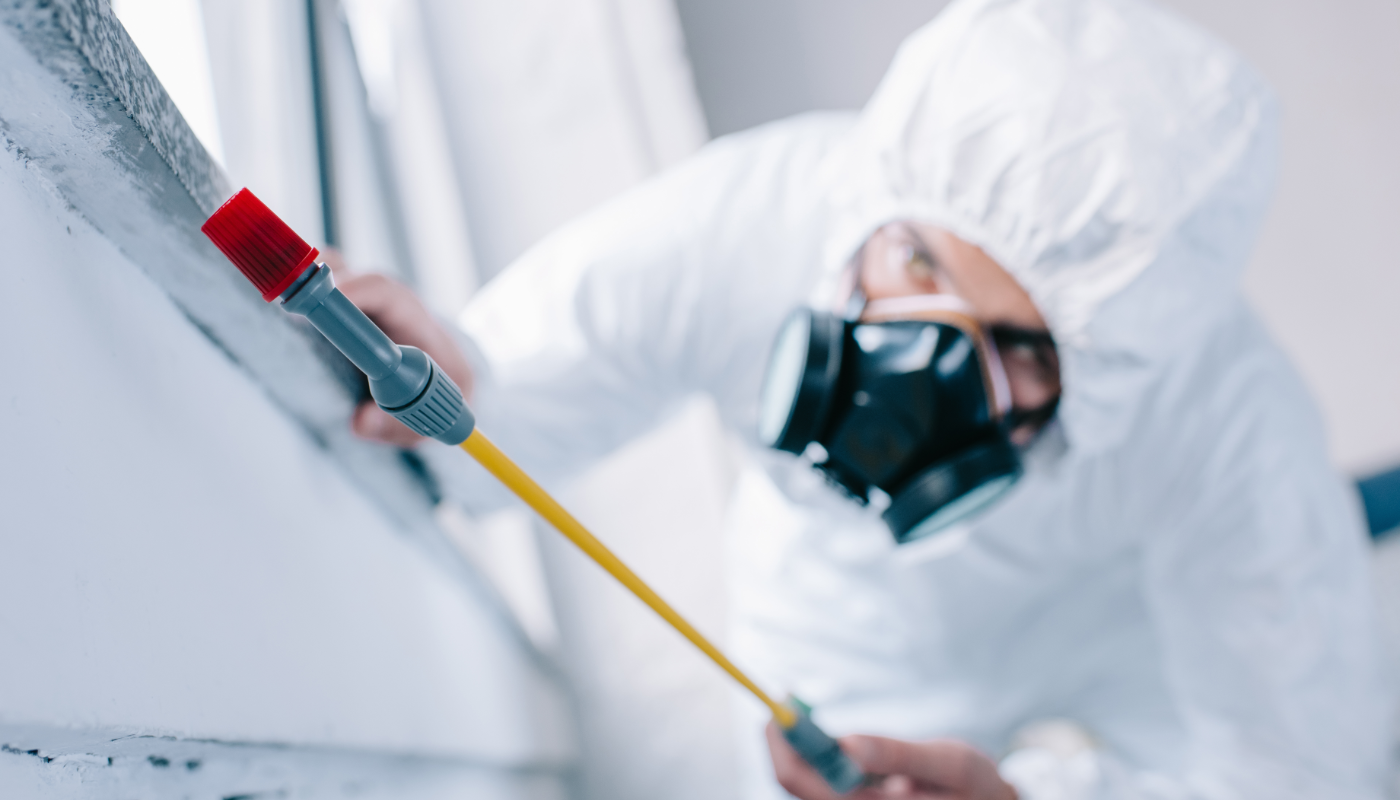Comprehensive Solutions for Chicago Pest Control for Restaurants: Maintain Your Establishment Pest-Free
Comprehensive Solutions for Chicago Pest Control for Restaurants: Maintain Your Establishment Pest-Free
Blog Article
Exploring Various Methods and Techniques for Comprehensive Insect Control in Residential Spaces
The landscape of insect control in domestic rooms has actually evolved considerably, necessitating a detailed understanding of numerous techniques that can be used for reliable monitoring. Standard chemical treatments, while reliable, are progressively being enhanced by green options and Integrated Parasite Monitoring (IPM) methods. House owners need to think about preventative measures, such as regular monitoring and exact bug identification, to maintain a healthy and balanced atmosphere. The genuine obstacle exists in striking a balance in between efficacy and safety and security-- an exploration that reveals the nuances of each approach and its effects for lasting living.
Recognizing Insect Control Fundamentals
Reliable insect control is important for maintaining a safe and healthy living environment. Recognizing the essentials of bug control includes acknowledging the types of pests that typically attack residential spaces, the prospective threats they position, and the value of safety nets. Typical family parasites consist of rodents, insects, and other undesirable animals that can endanger health, damages building, and trigger health issues.
An important primary step in parasite control is recognizing the specific pests present. This can involve inspecting areas such as cellars, attic rooms, and cooking areas, where pests are likely to grow. As soon as recognized, it is critical to recognize their habits, breeding cycles, and favored settings, which can notify proper control techniques.
Preventive steps are essential to reliable parasite monitoring. These include sealing access factors, maintaining cleanliness, and lowering mess to eliminate concealing areas. Additionally, correct food storage and waste management can dramatically reduce the allure of a home for pests.

Standard Chemical Treatments
Amongst the numerous pest control techniques, standard chemical therapies have actually long been used to resolve infestations in residential spaces. These treatments commonly involve the application of chemical pesticides made to remove pests such as bugs, rats, and other undesirable microorganisms. The effectiveness of these chemicals can vary, relying on the sort of parasite, the formulation of the chemical, and the approach of application.
Typical classes of conventional chemical treatments include pesticides, fungicides, rodenticides, and herbicides, each tailored to deal with specific parasites. Pesticides, for instance, might target termites, ants, or roaches, while rodenticides are particularly developed to manage rodent populations. These chemicals are often readily available in various types, consisting of sprays, granules, and lures, permitting home owners versatility in application.
Despite their effectiveness, conventional chemical therapies increase problems relating to prospective poisoning to humans, pet dogs, and helpful microorganisms in the atmosphere. It is important for homeowners to carefully comply with application guidelines and safety preventative measures to minimize risks. Integrated Bug Monitoring (IPM) methods can enhance these treatments, making sure a much more all natural approach to pest control while optimizing effectiveness and safety in domestic settings.
Eco-Friendly Bug Control Options
Environment-friendly pest control options are acquiring appeal as house owners look for more secure and extra lasting options to traditional chemical treatments. These methods focus on the health of both citizens and the atmosphere, decreasing the impact of insect control practices.
One widely embraced environmentally friendly approach is the usage of all-natural repellents obtained from crucial oils, such as peppermint and citronella. These oils not just hinder bugs however additionally provide pleasant aromas for interior areas. Diatomaceous planet, a powder made from fossilized algae, acts as an all-natural insecticide by harming the exoskeletons of insects upon call, leading to dehydration.
Another effective method entails advertising biodiversity in backyards and gardens. Introducing beneficial insects, such as ladybugs and lacewings, can naturally control pest populaces (Chicago pest control for restaurants). In addition, employing catches made from naturally degradable materials can help catch and get rid of parasites without causing injury to the ecosystem
Routine maintenance, such as securing entry points and proper cleanliness, more improves the performance of eco-friendly parasite control. Home owners can take aggressive steps to avoid invasions, guaranteeing a much more sustainable living environment while successfully taking care of pest-related problems.
Integrated Insect Management Techniques
Implementing integrated bug administration (IPM) techniques provides a detailed strategy to pest control that stresses prevention and lasting remedies. IPM integrates multiple strategies, concentrating on comprehending insect habits, life process, and environmental characteristics to lessen bug populations efficiently. This multifaceted approach focuses on non-chemical techniques, such as biological control, environment control, and cultural methods, to decrease reliance on pesticides.
A fundamental element of IPM is keeping an eye on and determining pests precisely. When treatment is necessary, this entails normal examinations and the establishment of activity limits to determine. By understanding the specific pests influencing property settings, targeted treatments can be utilized, lowering the likelihood of unnecessary pesticide applications.
One more important element of IPM is educating property owners concerning the significance of cleanliness and maintenance methods. By promoting an environment that discourages parasite problems-- such as sealing entry points and managing dampness-- citizens can considerably minimize the threat of pest issues. Additionally, when chemical controls are deemed needed, IPM supporters for making use of the least harmful alternatives to decrease ecological impact. Via these techniques, IPM not only addresses current insect issues visit this web-site yet additionally cultivates lasting methods that advertise long-term insect monitoring success.
Preventative Steps for House
To ward off potential bug infestations, property owners should adopt a proactive method that stresses preventative actions. This starts get redirected here with maintaining a organized and tidy home, as mess and food particles draw in pests. Chicago wasp nest removal. On a regular basis vacuuming, sweeping, and cleaning down surfaces can dramatically decrease the risk of problems
Additionally, securing access points is critical. Homeowners ought to inspect home windows, doors, and structure cracks for spaces that might permit bugs access to the home. Utilizing caulk and climate removing can properly block these entrances.
Proper food storage is another important step. Saving food in closed containers and quickly tidying up spills or crumbs aids hinder rats and insects.
Furthermore, taking care of outdoor settings can avoid insects from elbowing in on residential rooms. Home owners must ensure that water drainage systems are functioning well, and landscape design is kept tidy. Trimming bushes and trees far from your house and removing standing water can further diminish bug environments.

Verdict
In verdict, reliable bug control in property areas requires a complex method that combines conventional chemical therapies with green techniques and Integrated Bug Administration strategies. By prioritizing preventative procedures, such as maintaining tidiness and sealing entry factors, Click Here property owners can significantly lower bug occurrences. Normal surveillance and exact insect recognition even more enhance management initiatives. Ultimately, a well balanced method that integrates natural repellents and the very least toxic chemicals cultivates a risk-free and healthy and balanced living atmosphere while attending to pest-related obstacles.
Understanding the essentials of pest control entails acknowledging the kinds of bugs that commonly get into property rooms, the possible risks they posture, and the value of preventive procedures.A vital initial action in insect control is determining the specific insects existing. Integrated Insect Monitoring (IPM) strategies can complement these therapies, guaranteeing a much more all natural approach to pest control while making best use of efficacy and safety in domestic settings.
Applying integrated insect management (IPM) techniques uses an extensive approach to pest control that highlights avoidance and long-term solutions.In final thought, reliable bug control in residential rooms demands a complex method that combines traditional chemical treatments with eco-friendly techniques and Integrated Parasite Administration approaches.
Report this page